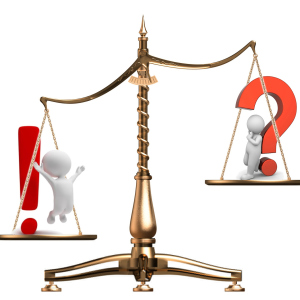With a tooth pain in his life, probably, each of us came across, but what a pulpit is, not everyone knows. So learn about this disease of the teeth more.
What is Pulpitis?
Pulpitis is an inflammatory process in soft tissue inside the tooth. Soft fabric in the tooth or differently is called pulp, represented by blood vessels, nerve endings, connective tissue.
The disease is characterized by such states:
- Acute Pulpit - tooth hurts from cold, sometimes hot without any reason
- Chronic Pulpitis - the tooth coarse for various reasons, but not much, tolerant
If the pulpit is not treated, it goes to the next stage of the disease, which is called sharp periodontitis.
What does the pulpit come from?
The pulp is a pulp to the tooth due to other not cured tooth diseases:
- Caries - The destruction of the solid part of the tooth. When a hole formed in the dental enamel, the microbes penetrate into the soft part, and the pulp or pulpitis occurs there.
- At inflammation of soft tissue surrounding tooth (gums), the formation of cysts on it, the microbes penetrate the root of the tooth, and then in the pulp.
- Tooth is damaged due injuries.
- Sometimes it happens that the dentist itself may be injured in the pulp or injury.
Initially, after entering bacteria in the middle of the tooth, comes acute pulpit characterized by the following stages:
- Focal, inflammation will be a small plot of pulp, pain short-term, especially at night.
- Diffuse, Dental pains, especially on cold.
- Purulent (Pump is formed in the pulp), the whole tooth hurts, the pain pulsing, for a long time.
If you do not treat a sharp pulpit, it goes into chronic shape of pulpita with the following stages:
- Fibrous (Part of the nerve endings are substituted with a connective tissue), the pain is weak, but if you touch the teeth - it increases.
- HypertrophicThe connecting tissue will grow even more, a polyp is formed from it that fills all the space in the tooth, an unpleasant smell appears, it hurts with pressure and there is blood.
- Gangrenous, pulp fabric completely disintegrates, the pulpitis is characterized by strong pains, especially from hot food.
How to treat a pulpit?
It is possible to restore the pulp of the tooth and cure it in the acute form of the pulp, as well as at the initial stage of chronic disease (fibrous pulpit), the remaining stages of chronic pulpitis are cured only in 10% of cases.
Patients with pulpitis teeth dentists are treated by the following methods:
- Biological - Treatment of inflamed pulp while preserving a living nerve. The treatment is carried out at the stage of acute pulpitis by antiseptic and calcium hydroxide, then the doctor puts a temporary seal. If the treatment goes successfully, a dentist will put a permanent seal after a few days. The method applies only at an early stage of the disease.
- Vital amputation - Removal in the tooth parts of the nerve affected by inflammation. Treatment is carried out under anesthesia patients up to 45 years.
- Decorative amputation - Coloring of the patient Pulp section with a special paste. Then the doner part of the pulp is removed, and the alive is treated with a mumstic solution, and left in the teeth.
Both pulp amputations are effective, but you need to care for your teeth and ensure that the remaining pulp is not subject to the pulpit. - Vital extirpation - Deleting the entire pulp under anesthesia. The procedure is carried out 1 time. It is impossible to make patients with allergies for anesthetic drugs.
- Devital Extirpation - "killing" nerve with the help of chemical compounds (paraformaldehyde, arsenic and others). The doctor's chemical publishes in the gap in the tooth for 24 hours - if a tooth with 1 root, and for 48 hours - if several roots in the teeth.
In addition to potent pastes in our dentistry, weak pastes are used, which leave in the teeth under the temporary seal to 2 weeks.
After such treatment, the doctor reveals the dental channels from the paste and the dead pulp, and closes the tooth with a constant seal.
The methods of extirpation dentists cure all types of pulpitis, except for purulent pulpitis. At the last stage of the disease, the tooth is not cured, it will have to be removed.

So, now we know what the pulpit is represented, and we conclude: to keep the sick tooth - it needs to be treated immediately.



















